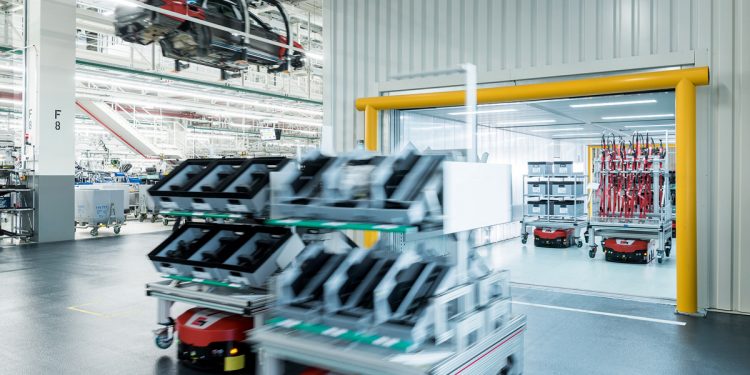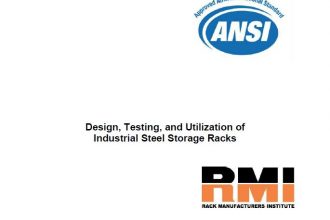Automated Guided Vehicles (AGVs) and Your Aisles

A great productivity enhancer, make sure your facility is prepared for the addition of AGVs.
Once you’ve made the decision to add AGVs to your facility and after finding the right partner, identifying the pain points the equipment will solve, and placing your order, you can look forward to improved productivity and efficiency of operations. That’s not the end of the journey, however. With robots moving about your warehouse, up and down aisles that employees might also share, you must set up racking with safety in mind.
One of the first considerations is whether you are adding the AGVs to a brownfield or greenfield facility. If an existing location, you likely won’t be retrofitting your aisles to accommodate the new vehicles, so you’ll likely need to run your equipment at a slower speed, which may require a higher number of AGVs to maintain the desired productivity level.
Whether a new facility or an existing one, you will need to clearly mark the travel path they will follow. Additionally, identify all pinch points, hazardous and restricted areas. Finally, ensure the travel path markings include all turns and parking locations.
When establishing your AGVs travel paths and zones, keep in mind that the recommended clearance between the vehicle carrying a load and any external structure—like a rack—must be a minimum of 19.7 inches, or 0.5 meters. You must always include space for an employee to leave the aisle, should it be necessary—this is known as an escape route.
Within your operating area, you will typically set up zones that include an operating zone, an operating hazard zone, a restricted zone, confined zones, and a load transfer area. These zones depend on the clearance between the AGV and the nearest fixed structure, as well as the presence of an active safety-related detection device in the travel direction.
It’s also important that restricted areas for your new AGVs include areas around doors.
These areas should include audible and/or visual alarms as vehicles approach them. The guide paths should not be routed through doorways frequented by personnel unless the opening is wide enough for the employees to remain outside the guide path clearance aisle.
Finally, you cannot overlook the human component in your facility when adding AGVs—often, your employees are sharing space and crossing paths with the robots. While modern AGVs are equipped with safety features to help prevent collisions, make sure your personnel are properly trained in AGV operation and safety within your facility. Lighting is not standard on AGVs, it is recommended so that they are clearly visible to employees who might encounter them. This can look like bright blue LEDS lighting that alerts personnel to the oncoming vehicles. It is also important to make sure your AGVs run consistently from one aisle to the next so that employees aren’t caught off guard by an unexpected turn or movement.
Work with your AGV partner for a final audit of your facility before beginning AGV operations. Once you’re in the clear, you can look forward to the efficiencies the vehicles will provide.
Guest Contributor- Brian Keiger, Chief Sales Officer (CSO) – North America Logistics, Grenzebach Corporation
Vice-Chairman – Mobile Automation Group at MHI


